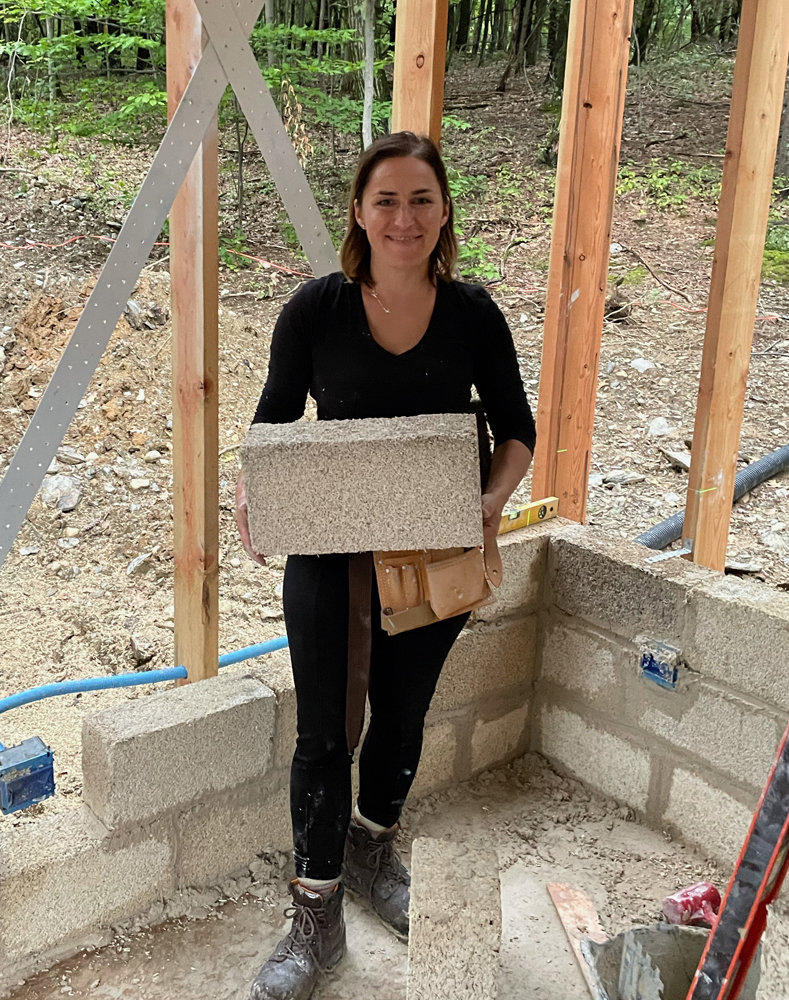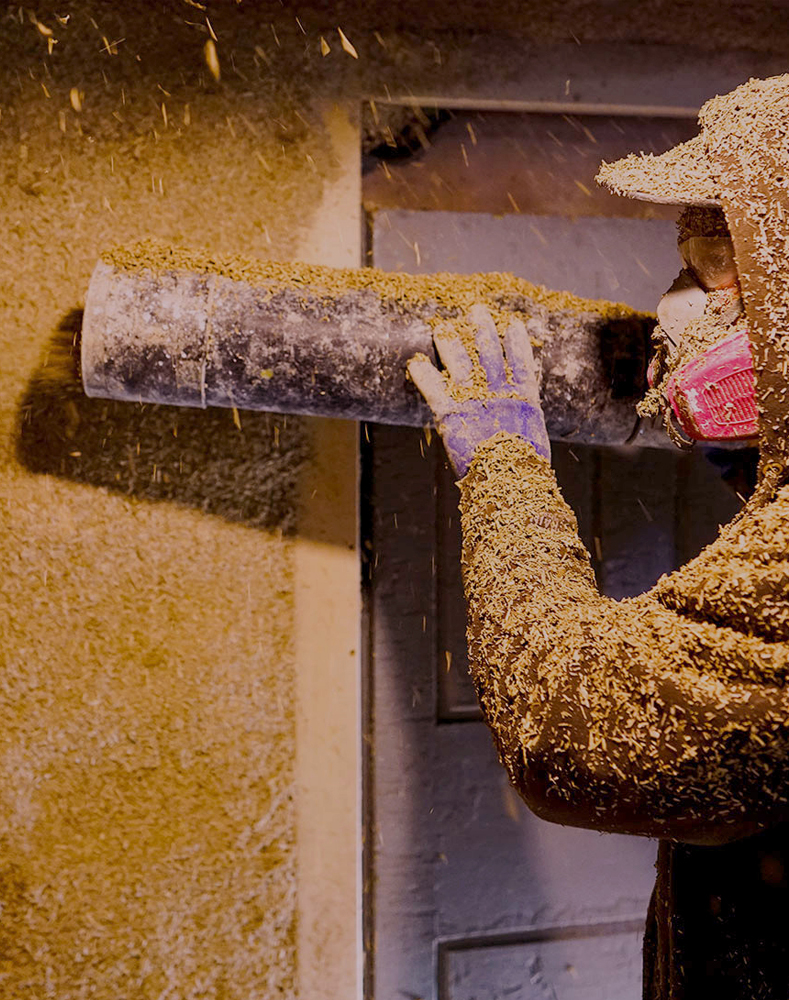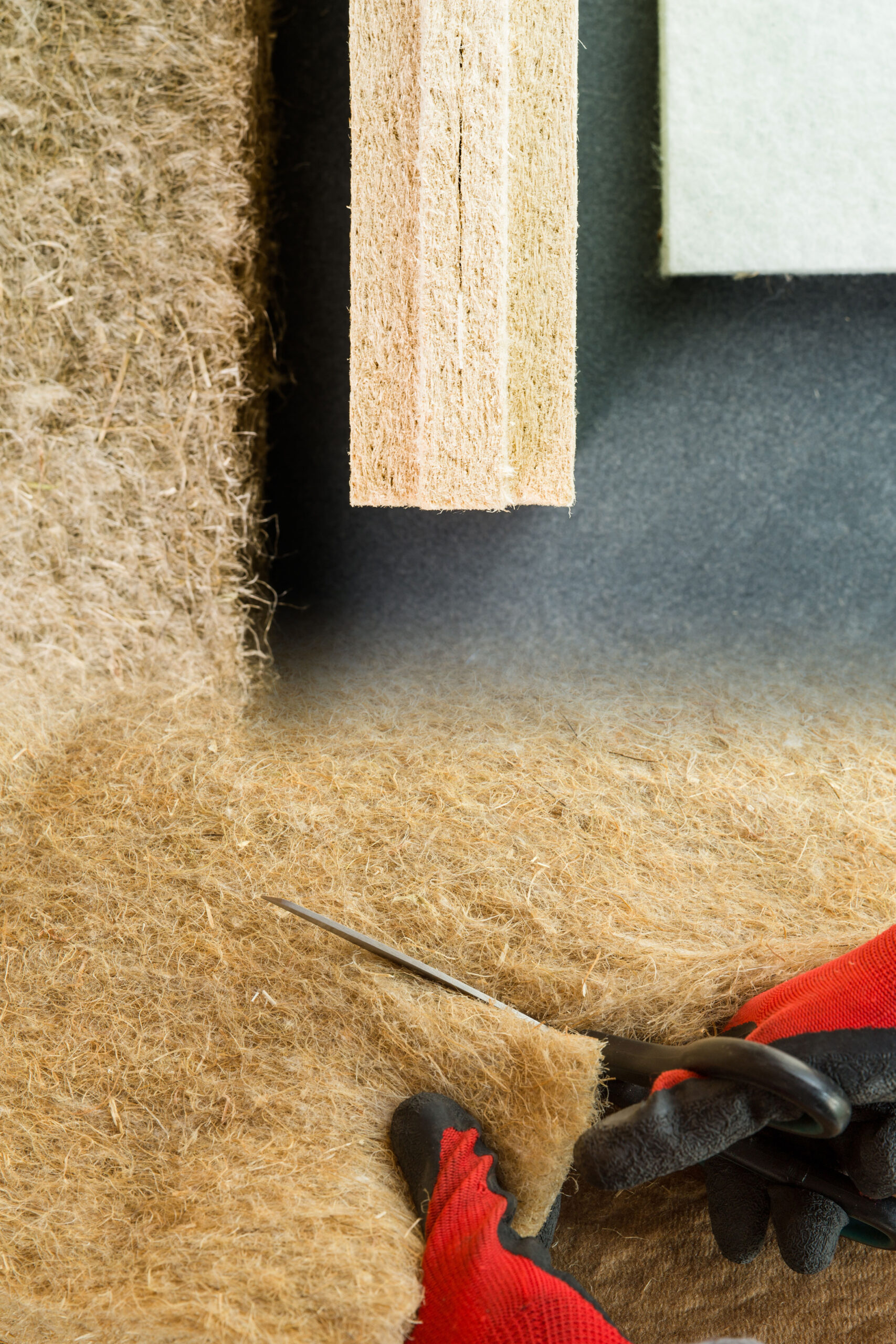Hemp Construction
Way back in 1994, the First International Conference on Sustainable Construction defined sustainable construction as “the creation and responsible management of a healthy built environment based on resource efficient and ecological principles.” Hemp construction follows each of the principles:
- Minimize resource consumption (Conserve)
- Maximize resource reuse (Reuse)
- Use renewable or recyclable resources (Renew/Recycle)
- Protect the natural environment (Protect Nature)
- Create a healthy, non-toxic environment (Non-Toxic)
- Pursue quality in creating the built environment (Quality)
What is Hemp Construction?
The fastest growth area for hemp fiber in the US is in sustainable construction materials. The main construction use for hemp requires minimal processing. Hemp hurd—by mass the bulk of the stalk—can be baled right off the decortication line and trucked to worksites where it is mixed with lime and water to make hempcrete, also known as hemp lime. The other primary uses for hemp in building materials are hemp composite lumber, which uses the entire plant and can be varietal-agnostic, and hemp insulation which relies on the bast fibers surrounding the inner core of the stalk.

Hempcrete at the Forefront

Hempcrete is a centuries-old building material made from chipped or fractionated hemp hurd (the inner woody core of the hemp stalk), After mixing, the substance hardens into a light, rigid, thermally regulating material ideal for building. Though hempcrete has been known for thousands of years, it experienced a resurgence in France in 1990s and spread quickly because it is renewable, easy to use, non-toxic, and light—it’s only 1/8th the weight of concrete with the same rigidity. Hempcrete is now at the forefront of the green building revolution, with multiple use cases including artisanal spray-application (pictured), pre-cast modular blocks, and interlocking wall panel systems.
Hempcrete is gaining popularity because it’s as durable and practical as it is sustainable: it’s nontoxic, biodegradable, lighter than concrete and regulates internal temperature naturally. If that weren’t enough, hempcrete is carbon neutral and fireproof. In fact, PAHIC member and hemp construction leader Americhanvre achieved a major industry milestone in July of 2024 when they conducted the United States’ first full-scale ASTM E119 fire resistance test on hempcrete. During the test, a twelve inch thick hempcrete wall was exposed to 1700-degree Fahrenheit heat for sixty minutes while under load, followed by a hose stream test. Impressively, the sample withstood the extreme heat and the subsequent hose stream test, earning a one-hour fire resistance rating, confirming a widely held belief in the hemp building community regarding the exceptional fire resistance of well-constructed hempcrete homes.
Hempcrete continues to sequester CO2 in situ throughout its lifetime.
Hemp Insulation and Hemp Composite Lumber
can cause climate change, desertification, soil erosion, fewer crops, flooding, increased greenhouse gases in the atmosphere, and a host of problems for Indigenous people.America’s 81-year prohibition of hemp kept the doors shut on research at a time when the world was growing faster than ever before. The benefits of hempcrete are real, but now we can look beyond this time-tested material to a range of technical applications in construction. Hemp insulation and hemp composite flooring are leading the pack.
Hemp Insulation
The processed bast fiber of the hemp crop makes a healthy, non-toxic highly effective alternative to traditional fiberglass insulation. Most homes and offices use toxic insulation that’s dangerous for the workers installing it and continues to emit harmful chemicals after installation that can threaten human health. The insulating and moisture-reducing properties of hemp bast fiber have led multiple companies in the US and abroad to develop natural insulation that designed to be used in exterior walls, including floors, and ceilings. With a thermal resistance value (R-value) of over 3.5 per inch, hemp insulation is as effective as toxic insulation without concerns about volatile compounds or environmental damage.
Hemp Composite Lumber
Bamboo composite flooring emerged in the 1990’s as an alternative to building materials made from trees. Since the full legalization of industrial hemp, a few companies have made a name for themselves creating carbon neutral, and in some cases carbon negative composite lumber from hemp.
Deforestation accounts for 15% of global GHG emissions. Since 1990, the world has lost one billion acres of forest. Deforestation can cause climate change, loss of species and species diversity, desertification, soil erosion, fewer crops, flooding, increased greenhouse gases in the atmosphere, and a host of problems for Indigenous people.
Hemp absorbs more CO2 than trees and grows to maturity in 120 days, compared to 50-100 years for oak trees. The leading hemp lumber manufacturer is carbon-negative and achieves parity with timber hardwood in both price and functionality.

Created in part with a grant from the Pennsylvania Department of Agriculture
Join PAHIC and benefit from resources, knowledge and a community dedicated to the ongoing success of industrial hemp in Pennsylvania.





